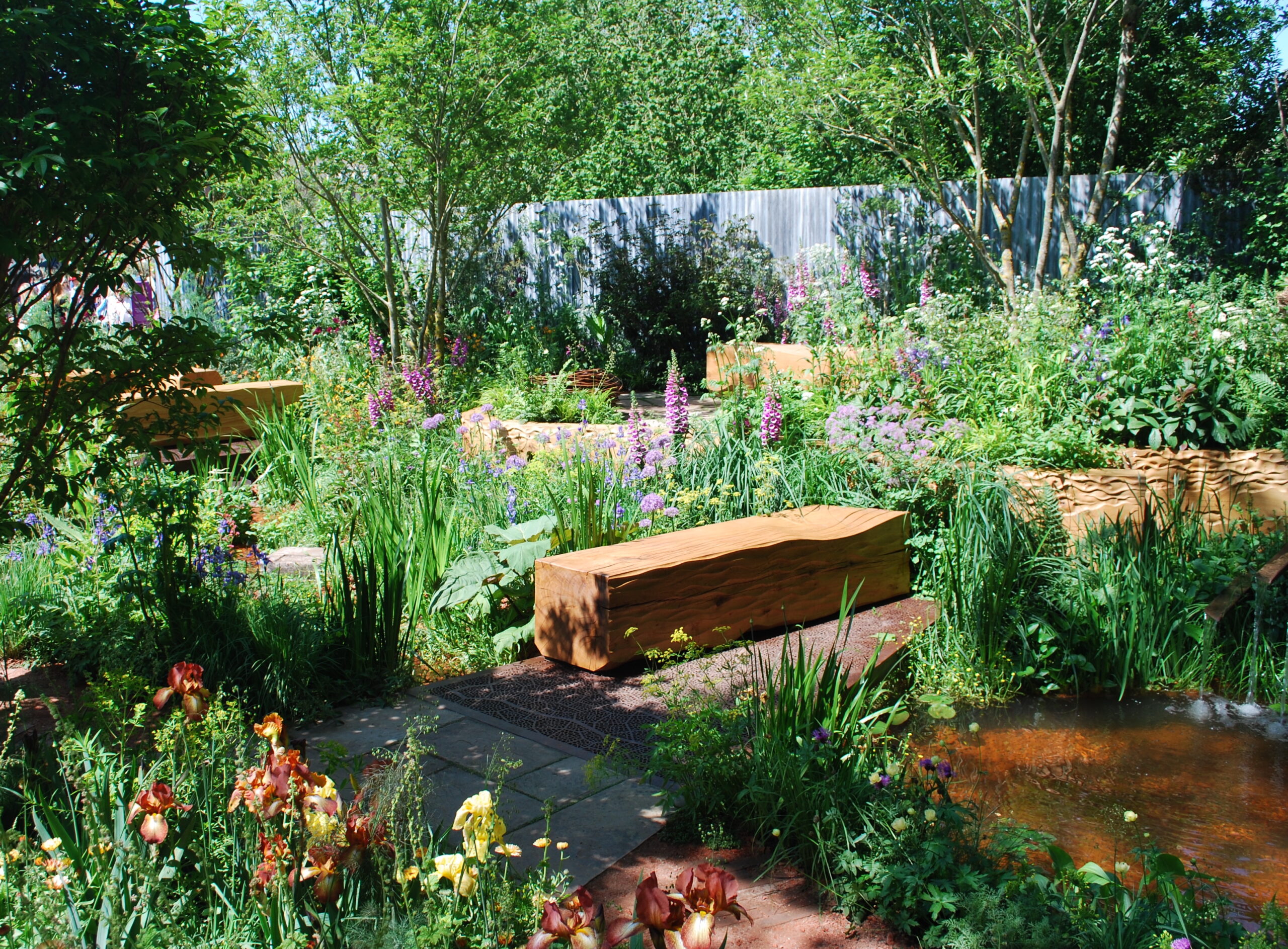RHS Chelsea celebrates Octavia Hill and the joy of plants and flowers

Warm, welcoming palette in warm shades such as yellow yarrow (Achillea millefolium ‘Credo’) rusty-toned irises (‘Kent Pride’) and yellow/brown Iris ‘Rajah’ echo the hue of the wildlife pond.
Being in green spaces, whether in woods, park or gardens, is proven to improve mood, mental health and emotional wellbeing. University of Exeter research shows positive impacts including reducing stress, fatigue, anxiety and depression, boosting immune systems, encouraging physical activity and possible risk reduction for chronic diseases such as asthma. It can combat loneliness and bind communities together.
Ahead of her time, Octavia Hill (1838-1912) believed that ‘the healthy gift of air and the joy of plants and flowers’ were vital for everyone. A social housing revolutionary, she campaigned, and took practical action, to create good-quality, affordable housing for society’s poorest. However, her vision extended beyond the four walls of a home, and as a believer in ‘the life-enhancing virtues of pure earth, clean air and blue sky’ she originated the concept of ‘open-air sitting rooms’ so popular in many gardens today.
Octavia also fought for the preservation of the countryside, and was a founder of the National Trust, helping it to buy and protect its first land and houses, and she campaigned for the preservation of footpaths to enable access to the land for everyone. So it makes sense that this year’s RHS Chelsea Flower Show features a garden that celebrates her legacy, based on the idea that if she was still alive, she would still be prioritising access to nature for urban communities.

Wheelchair-accessible paths lead between the outdoor rooms, past drifts of plants in sunny shades, to tree-shaded areas with specimens in cooler tones. Along the way, seating made of reclaimed wood and low-carbon concrete invite visitors to spend time together
The Octavia Hill garden at the RHS Chelsea Flower Show
Winning a silver-gilt show medal and the first Children’s Choice Award, the garden is conceived of as an urban community wildlife garden on a brownfield site, and built as a series of rooms, where visitors can experience different views and atmospheres. Seating made from reclaimed wood sited beneath trees, encourages sitting and socialising. Swaying grasses bring movement and gentle, calming sound, as do a trickling streamlet and three soundscapes based on plants’ electrical impulses, birdsong and human speech. Bird-boxes hang from the trees and the retaining wall has wildlife habitat panels. The colour scheme is mainly split between oranges/golds/yellows and blues/purples/lilacs, for contrasting moods.
The garden was created by award-winning designer Ann-Marie Powell, with garden centres Blue Diamond (selling a plant collection based on the garden) with the National Trust.
You can still see a couple of Octavia Hill’s gardens in London: Red Cross Garden, near Borough Market; St George’s Gardens, near St Pancras station. Postman’s Park, near St Paul’s Cathedral (where I used to eat my lunch while working nearby), was saved by her. It has touching plaques to people who gave their lives for others.
Access to outdoor space
Sadly, the work of campaigners such as Octavia Hill is still needed. One in three people in Britain don’t have access to a natural green space within 15 minutes’ walk from home. So important is it, that a Government inquiry into urban green space provision began last autumn.

Photo: RHS.org.uk
What you can do
Imagine a block of flats with bare balconies, or a street where front gardens have become car parks – now see the scene with bursts of colour, leafy growth, and life. Plants are pretty good at growing by themselves: buddleia sprouting from railway tracks, valerian jutting from walls, rapeseed escapees on the roadside, daisy-like Erigeron cloaking walls, street trees encircled by weeds and wild flowers…
And however small your garden/balcony/windowsill, growing plants will benefit you, those around you, and the wider environment. I’ve recently filled a huge planter in my brick-tiled front garden with vivid orange geums, white buttons of thrift, tall sweeping Verbena bonariensis, acid-green euphorbia, with black grass and nasturtiums tucked in. Our view has improved immeasurably, but every day, passers-by look at the display and smile. And, of course, it increases food and shelter for pollinators in the city where I live, and helps soak up rainwater.
So why not think about supporting everyone’s need for urban green space, and create one yourself, however small?

The joy of plants and flowers
Adrienne Wyper is a health and lifestyle writer and regular TNMA contributor.
Read the growth of women who garden HERE.

May is the month when I enjoy going to different nurseries to experience seeing the colors of different flowers and plants. I am looking forward to planting when the weather co-operates (right now, too wet, had lots of rain).
Adrienne, thank you for this wonderful blog.